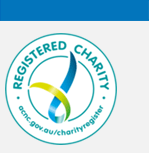Author Credentials
Maryam Shahpari: Critical care nursing student, Student Research Committee, School of Nursing and Midwifery, Rafsanjan University of Medical Sciences, Rafsanjan, Iran.
Dr. Shahin Heidari: Assistant Professor, Department of Fundamental Nursing, School of Nursing and Midwifery, Geriatric Care Research Center, Rafsanjan University of Medical Sciences, Rafsanjan, Iran.
Dr. Tabandeh Sadeghi (Corresponding Author): Associate Professor, Department of Pediatric Nursing, School of Nursing and Midwifery; Non-Communicable Diseases Research Center, Rafsanjan University of Medical Sciences, Rafsanjan, Iran.
Abstract
Background
Anxiety is one of the consequences of hospitalisation for diagnostic– therapeutic procedures, especially in coronary angiography. Studies have shown that interventions when patients are admitted to hospital can reduce anxiety but no research has been carried out on the effects of interventions before patients are admitted. This study aimed to investigate the effects of a telephone-based orientation program, delivered during the waiting time, on anxiety in patients undergoing coronary angiography.
Materials and methods
In this clinical trial, 70 patients who were candidates for coronary angiography in an urban region of Iran were selected and randomly assigned to the intervention and control groups. The control group received routine care. In contrast, the intervention group received an orientation program via telephone during the waiting time in the weeks leading up to the procedure, in addition to routine care. The data was collected using the Spielberger State–Trait Anxiety Inventory (STAI) to assess patient anxiety at the time of admission, one hour before angiography and two hours after the procedure.
Results
There was a significant difference between the two groups in the mean scores of anxiety at admission, one hour before angiography and two hours after the procedure. The mean score of anxiety was lower in the intervention group than in the control group.
Conclusions
A telephone-based orientation program could be used when patients are waiting to have the procedure as a strategy for reducing anxiety in patients undergoing coronary angiography.
Recommended Citation
Shahpari, Maryam; Heidari, Shahin; and Sadeghi, Tabandeh
(2021)
"The effects of a telephone-based orientation program, delivered during the waiting time, on anxiety in patients undergoing coronary angiography,"
Journal of Perioperative Nursing: Vol. 34
:
Iss.
1
, Article 1.
Available at: https://doi.org/10.26550/2209-1092.1102
Creative Commons License

This work is licensed under a Creative Commons Attribution 4.0 License.


